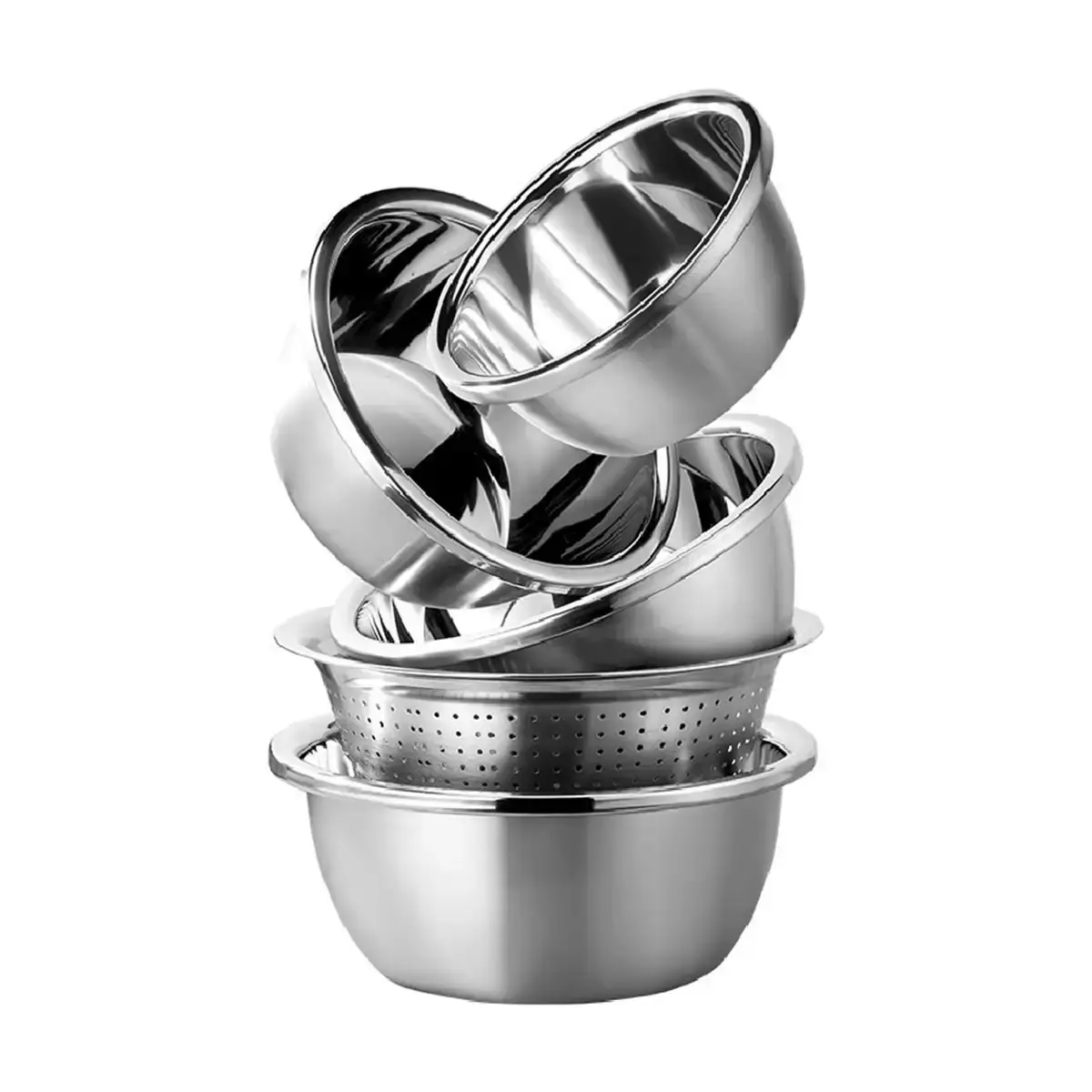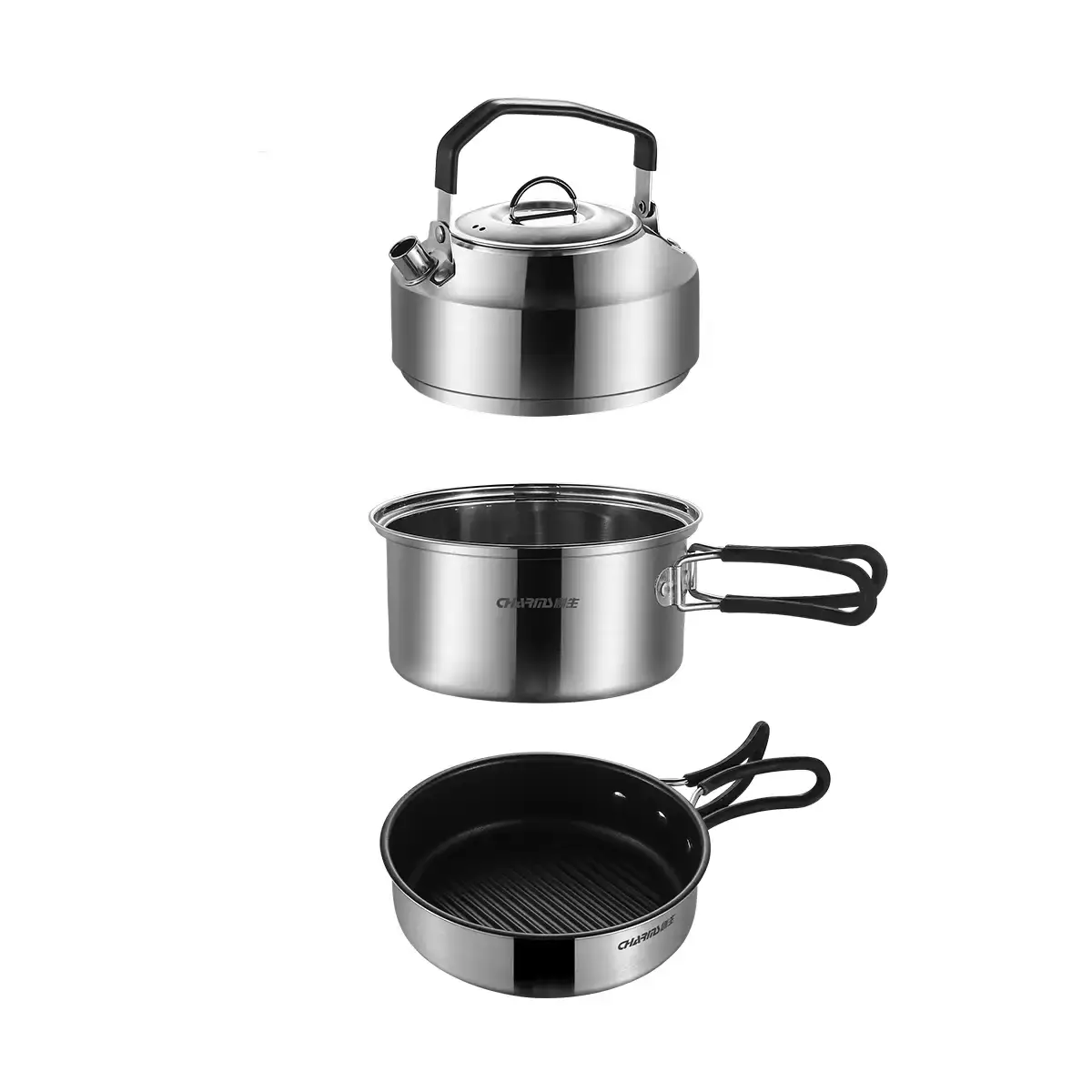Picking out dinnerware for your kitchen or dining room isn’t just about looking good. The material you choose affects how long it lasts, how safe it is, how easy it is to take care of—even your whole dining experience. Among all the popular options, 304 stainless steel and ceramic stand out for their unique perks. With years of experience in production and quality control at Charms, I want to break down the differences, advantages, and real-world things to consider for each material—so you can make a confident, smart choice.
What Even Is Stainless Steel Dinnerware?
Stainless steel dinnerware, especially 304 stainless steel, is a staple in both commercial kitchens and modern homes. It’s got 18% chromium and 8% nickel, which keeps it from rusting, handles heat well, and keeps that shiny finish for ages. Charms’ 304 stainless steel plates and bowls are made with Korean high-frequency brazing tech—so they’re light and easy to use, but still super sturdy.
The appeal of 304 stainless steel isn’t just about strength, though. It’s non-reactive, meaning it won’t leach chemicals into acidic foods—think ketchup or citrus dishes. It also handles high heat without warping or cracking, which is perfect for serving both hot and cold meals.
Style-wise, stainless steel has that sleek, modern vibe. Its shiny surface pairs great with minimalist or industrial-style dining spaces, but it’s also versatile enough to go with colorful tablecloths or other decor. Its neutral tone fits any table setting, from casual weeknights to fancy dinners.

What Makes Ceramic Dinnerware Special?
Ceramic dinnerware is loved for its timeless elegance and endless style options. Unlike metal, it’s made from clay fired at high temperatures, which creates a hard, glass-like surface. That process opens up so many design possibilities—from intricate hand-painted patterns to smooth, simple glazes.
One big plus of ceramic is its heat retention. Ceramic plates and bowls stay warm longer, so your food stays nice and hot—way more satisfying for eating. It also works in microwaves and ovens, which is a flexibility stainless steel just doesn’t have.
Touch-wise, ceramic feels thick and substantial—something a lot of people link to quality and luxury. Its surface is smooth and non-porous, too; if the glaze is done right, it’s less likely to trap food or absorb odors. At Charms, we stick to strict quality standards to make sure our ceramic dinnerware meets ISO certifications—so it’s consistent in both performance and how it looks.
How Do 304 Stainless Steel and Ceramic Differ?
To get the real differences between 304 stainless steel and ceramic dinnerware, let’s look at a few key factors: what they’re made of, how durable they are, how they handle heat, how they look, and how to take care of them.
1. What They’re Made Of
- Stainless Steel: An alloy of iron, chromium, and nickel.
- Ceramic: Natural clay that’s hardened by firing at high heat.
2. Durability
- Stainless Steel: Pretty much unbreakable. It doesn’t dent, chip, or crack easily.
- Ceramic: It’s strong, but drop it or hit it with sudden temperature changes, and it might chip or shatter.
3. Heat Conductivity
- Stainless Steel: Heats up fast, but cools down fast too. Good for quick serving, but it can have hot spots.
- Ceramic: Holds heat longer, so your food stays evenly warm.
4. Style Flexibility
- Stainless Steel: Focuses on modern, minimalist looks.
- Ceramic: Super customizable—patterns and textures work for both traditional and modern tables.
5. Care Needs
- Stainless Steel: Easy to clean, dishwasher-safe, and doesn’t stain.
- Ceramic: Needs gentle handling to avoid breaking. Over time, the glaze might get tiny cracks from regular use.

Which Is More Durable?
Durability matters a lot when picking dinnerware—especially if you use it a lot. Here, 304 stainless steel wins hands down. It resists rust, doesn’t break, and can handle repeated hot washes without wearing out. If you take care of it, stainless steel dinnerware can last decades. It’s a long-term investment for any table.
Ceramic is strong, but it’s inherently fragile. Even high-quality, well-fired ceramic can eventually crack or shatter if you drop it or expose it to heat shock. It’s nice to look at and use, but it usually doesn’t last as long as stainless steel in busy, everyday settings.
Which Is Safer for Daily Use?
Safety is non-negotiable, especially for something you use every day to eat. 304 stainless steel shines here because it’s non-reactive. It won’t leach chemicals, holds up to acidic foods, and stays structurally sound over time. That’s a huge win for both home and commercial kitchens.
Ceramic with high-quality, lead-free glaze is also safe. But here’s the catch: cheaper ceramic might have heavy metals in the glaze, which can be a health risk. You have to make sure your ceramic dinnerware meets strict safety standards.
Which Is Easier to Use and Take Care Of?
Whether dinnerware becomes a daily workhorse or just an occasional luxury usually comes down to how easy it is to use and maintain.
Stainless steel is light, so it’s easy to handle, and it’s dishwasher-safe. It doesn’t hold onto odors or stains—just wash it regularly, and that’s it. It also doesn’t scratch or dent easily, so it stays looking new for years.
Ceramic is lovely to use, but it needs gentle treatment. It’s heavier, easy to break, and usually needs soft cleaning. If you run it through the dishwasher a lot, the glaze might fade over time, or tiny cracks could get worse.
Practically speaking, stainless steel is the way to go if you prioritize speed, reliability, and low maintenance.
Which Fits Your Table Style?
Table aesthetics are totally personal, but both materials have their own strengths:
- 304 Stainless Steel: Perfect for modern, minimalist, or industrial designs. Its shiny surface pairs great with neutral colors, wood accents, and metal details. Ideal if you want simple, understated elegance.
- Ceramic: Great for cozy, traditional, or artistic vibes. It comes in so many colors and textures—so the plates themselves can be part of your table decor.
Think about your existing dishes, how you usually eat, and your overall design vibe. Stainless steel is subtle and classy; ceramic lets you go bold with artistry.

Which Gives You More Bang for Your Buck?
Value isn’t just about the initial price—it’s about how long it lasts, how much you have to maintain it, and how well it works.
- 304 Stainless Steel: It might cost a little more upfront, but it’s super durable and low-maintenance. It doesn’t break, stain, or get damaged by heat—so it pays off in the long run.
- Ceramic: It might be cheaper at first, but you could end up spending more over time on replacements (from breaks) and extra care. That said, if you care about looks and feel, high-quality ceramic is still worth it.
Conclusion
304 stainless steel and ceramic dinnerware each have their own pros. Stainless steel crushes it when it comes to durability, safety, easy maintenance, and long-term value. Ceramic, though, stands out for design variety, heat retention, and that classic look.
If you care most about practicality, durability, and everyday reliability—go with 304 stainless steel. If you want visual appeal, a personalized table, and that nice, substantial feel, ceramic is still the classic choice.
Figuring out your specific needs, how you eat, and your table style will help you decide. A good choice isn’t just about buying useful dinnerware—it’s about making every meal easier, safer, and more stylish.
If you want to make this blog even more relatable, I can add some real-life examples (like “how stainless steel holds up to kids’ mealtimes” or “ceramic hacks for easy care”)—would you like me to draft that extra section?





